Moment's Notice
Reviews of Recent Recordings
(continued)
Juhani Aaltonen + Heiki Sarmanto
Conversations
TUM CD 024-2
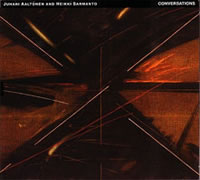 What do you do with prejudices: keep them strictly to yourself, or air them frankly? After all, orthodoxy is my doxy, and heterodoxy is another man’s doxy. So ... I instinctively distrust saxophone and piano duos, or distrust myself for liking them so much. It often seems an easy approach to improvisation. My hackles bristle even more aggressively when presented with a record called Conversations, especially because I know there’ll be a version of “Alone Together” somewhere on the set-list.
What do you do with prejudices: keep them strictly to yourself, or air them frankly? After all, orthodoxy is my doxy, and heterodoxy is another man’s doxy. So ... I instinctively distrust saxophone and piano duos, or distrust myself for liking them so much. It often seems an easy approach to improvisation. My hackles bristle even more aggressively when presented with a record called Conversations, especially because I know there’ll be a version of “Alone Together” somewhere on the set-list.
Conversation is a poor metaphor for what goes on in improvisation. As Jane Ira Bloom says, in a conversation I talk and then you talk and then I talk some more, and maybe we disagree, or we fall into a completely private way of speaking. Either way, it doesn’t make for interesting listening, which is why the imagery of the prizefight sometimes comes more readily to mind.
Here’s another prejudice. I admire everything Juhani Aaltonen has done. I’d listen to him brush his teeth. He’s now been working on the Finnish scene for half a century, turning an early Coltrane influence (with hints of Rollins) into a highly individual free jazz approach, and a classical training on flute into a compellingly original use of that instrument in jazz and fusion contexts. He worked with Edward Vesala, another of my unquestioned loyalties, and with jazz rock darlings Tasavallan Presidenti, ditto. The association with pianist Heiki Sarmanto is even longer lived. There is a publicity photograph of the two men together with fellow-saxophonist Esa Pethman, bassist Kari Hynninen, drummer Anssi Pethman and vocalist Carola, but this was the “group that never was.” Despite plans to tour – they have their bags packed in the picture – they never even rehearsed and went separate ways. A decade later, they were both in the Serious Music Ensemble, with Heiki’s brother Pekka and others. Aaltonen continued to work within Sarmanto’s music, and has performed as soloist on some of the pianist’s orchestral works.
They’ve continued to work and record together and inevitably a combination of long familiarity, shared experiences and a sympathetic romanticism have allowed them to “converse” at an intuitive level beyond more casual partnerships. “War Trane” is a clear recall of the impact, visceral, overwhelming, perhaps a little shocking, of seeing the Coltrane quartet (with Dolphy) on the 1961 European tour. But Aaltonen’s description of his own saxophone style as “chatting” – or in Finnish “jutustelu” – is somewhat misleading, since what one hears is much closer to bardic storytelling, narrative drawn out of a collective unconscious and oral-formulaic storehouse, than it is to post-prandial murmuring.
Most of the pieces are attributed to Sarmanto, but approached spontaneously and apparently without prior discussion. “Le Petit Soldat” is given a raw new edge, with Junnu (as Aaltonen is always called at home) spitting out hard roundels of melody over a blunt, unsentimental accompaniment. The opening “When I Was With You” works in a similar way, the romantic reach of the piece constrained by something dark and chastened. There is real anguish in Aaltonen’s altissimo scream, or maybe it’s just chastened and aware. “Evening Prayer,” “From Nothing” and “No Work Bound Me” likewise: great duo performances but also testimony to Sarmanto’s facility with simple-seeming melody supported by rigorous architecture. The improvised pieces, which might be considered more “conversational” than the composed tunes, do tend to be gentler and musing. “Just Like A Dream” wanders amiably. “Free Souls” considers what you might do when you’re in company so simpatico there are no rules or constraints. “Peace Talk” is wise and aware. There are a couple of standards, which float up quite naturally towards the end of each disc. “You And The Night And The Music” contains memories of dancehall days, a swinging idea broken up into elements. They even give a fresh sheen to “Alone Together.” I’d still put a moratorium on it, but this stays my hand.
With Junnu on tenor throughout, and Sarmanto rarely breaking out of a meditative and low-intensity keyboard attack, there’s some danger that it might all become too easy and free-flowing to sustain over nearly two hours of music. That it holds attention over almost that entire span is testimony not just to expert “musicianship” but also to a relationship that transcends technique. I don’t have much time for eavesdropping, but if you had to pick a wall on which to be a fly, this is definitely the one.
–Brian Morton
Available Jelly
Baarle Nassau Set 1
Ramboy #28A
Baarle Nassau Set 2
Ramboy #28B
Holshauser + Bennink + Moore
Live in NYC
Ramboy #29
Michael Moore Quartet
Amsterdam
Ramboy #27
Easter Sunday
Ramboy #30
Michael Moore Quartet
Rotterdam
Ramboy #26
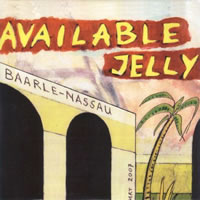
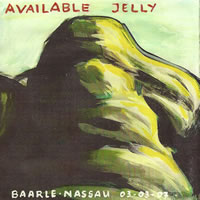
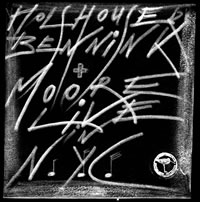
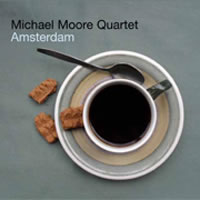

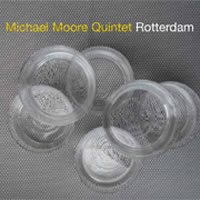
It’s one of the worst band names ever, Available Jelly, but it has stood the test of time, and withstood the tides of feminism, with albums going back to Le Jelly in 1984 and In Full Flail for Ear-Rational four years later. Founded in Salt Lake City in 1976 by Gregg Moore and Stuart Curtis, the group originally accompanied a mime troupe. Even after that, there was a theatrical (circusy?) feel to some of the early material, themes tossed out with Raymond Scott-ish abandon. Clarinetist Michael Moore (Gregg’s brother) joined up in 1978, with drummer Michael Vatcher and trumpeter Jimmy Sernesky. A certain satirical tone persisted and then faded with time, as did an occasional early whiff of art-rock, but when Michael shifted permanently to the Netherlands in the ‘80s he found himself in a scene dominated by the puckish Misha Mengelberg and Han Bennink, and largely characterized as far as outsiders were concerned by the antic neo-swing of the Willem Breuker Kollektief, whose superficial clownishness effectively disguised a rigorously authentic jazz sensibility. Opposite scenario to Frank Zappa, whose savage comedy managed to keep the lid on an unstirred stew of emptily disparate influences. Moore – who was also a member of Clusone 3 with Ernst Reijseger and Han Bennink, and works in the New York trio with Bennink listed above – still stands some risk of being thought of in a similar light to Breuker and similarly overlooked. He’s a formidable musician, though, the most interesting and (along with Marty Ehrlich) most creative clarinetist on the present scene, who makes good sparing use of the over-exposed bass clarinet, and is a more than dependable alto saxophonist. Moore never sounds like he’s “doubling” but treats each horn with due awareness of its personality. He’s also something of a musicologist: there are themes on these derived from Myanmar and Madagascar, and there’s a kwela encore on the second volume of the AJ double set, reminiscent in many respects of sometime associate Gerry Hemingway’s recent exploration of African sources.
The latter day AJ is co-fronted by Michael and cornetist Eric Boeren, with Wolter Wierbos in Gregg’s trombone role and Tobias Delius completing the little-big-band front line; bassist Ernst Glerum generates the steam with Vatcher. If you were tweeting a definition, you might say Available Jelly do avant-swing, with free elements and occasional throwbacks to the raw dramatics of the first few records. The live material is from Plushok in Baarle Nassau, a municipality in Southern Holland with a famously complex border, involving lots of Belgian exclaves. It’s a nice metaphor for music which doesn’t have obvious boundaries or delimitations. Boeren has a nicely old-fashioned cornet voice, with a tight but expansive sound more reminiscent of Nat Adderley than of current exponents like Taylor Ho Bynum. Delius, like his composing namesake, is able to convey deep joy and a wrenching sadness within a couple of bars. Wierbos, also associated with Hemingway, is a whole section unto himself, a big-toned player (often sounds like he might have shifted ‘bones to a bass or soprano instrument somewhere mid-chorus) with a nice parcel of effects at his disposal. There’s an Ellingtonian tinge to much of the music. It’s complex, but not overly so and it favors Ducal exclaves (“Village of the Virgins,” “The Feeling of Jazz”) over more familiar stuff. That said, “Isfahan” on set one is the best non-Rabbit versions ever recorded: exquisite.
Moore’s working quartet is represented by two gigs just over a year apart, at the Bimhuis on Easter Sunday last year, and at the Muziekgebuow in February 2010. Vatcher’s present again for both, and pianist Harmen Fraanje and bassist Clemens van der Feen complete a group that, unlike AJ and the quintet, is much more sharply focused on Moore’s clarinet and saxophone. He has a great, tutored tone, which keeps the warmth of its chalumeau right up into the upper register, avoiding that adolescent-boy squeak that overtakes even admired contemporary players (you know who you are! stop shuffling your feet!) as they negotiate the break. He’s a melodist, perhaps first and foremost, with more of the “instant composition” feel of a Misha Mengelberg or a Lol Coxhill than that of a player whose first concern is with the changes. In fact, Moore often works through fairly enigmatic harmonics, a legacy, I’d guess, of his deep involvement in non-European musics. I long since gave up trying to work out the direction of his solo work. It’s more rewarding just to go with it.
The quintet date is the oldest thing here, from 2008, but perhaps the most completely satisfying. Again, it has the profile and overall pitch of an orthodox jazz combo, with Eric Vloeimans on trumpet (another player who straddles mainstream and progressive with some ease), Marc van Roon on piano, Paul Berner bass and Owen Hart, Jr. on drums. It isn’t clear whether “Whistleblower” is a reference to namesake documentary maker Michael Moore, but it’s a formidable piece, developed over twelve minutes and nicely constructed through the middle, so its sense of direction is never lost even when the detail strays and explores. Moore told me that he plays European music when he’s with Dutch players and American music when he’s in company with his old compatriots. It’s subtler than that. He’s brokered a fascinating position, a one-man Baarle-Hertog which owes allegiance to both. Step across a pub courtyard in that fascinating little place and you find yourself in another country. It works like that almost bar-to-bar on pieces like “Solstice” and “Meager Harvest” or “Tittlich” and “Switz,” clever contemporary ideas that don’t sound like anyone else around.
The trio with Bennink and accordionist Will Holhauser is mostly in a free mode, with a few Moore compositions and ethnomusicological elements sewn in. Han is great, as only Han can be great, and in the same way that Moore nudges towards it. It’s free music that swings, grooves, emotes and thinks on its feet, funny and serious not so much by turns but in the same register. “Truthiness” is crackling good and though the CD is by far the lightest here in terms of duration, it delivers big.
I think on balance I prefer Moore without another horn around, but he’s sufficiently big-voiced to stand up in classic-quintet situations and by the time Rotterdam rolls around to the closing sequence of “Occult” and “Providence,” you’re hooked. If you know the city, you might have taken the river taxi out to the Hotel New York, the old Holland-America embarkation building out in the Maas – they’ll do you an overpriced lobster but you’re too distracted to notice or mind, a theme restaurant for grown-ups – and listening to Moore is almost like reversing the process, America returning to Europe, flipping the mythologies, reimporting the forms and re-energizing them. I don’t know how he keeps the Ramboy imprint going in these times, but I’m glad he has. I haven’t enjoyed a bunch of records from a single artist so much in a dog’s age.
–Brian Morton
Tim Berne
Snakeoil
ECM 2234 B0016437-02
 Snakeoil is Tim Berne’s first recording as a leader for a major label since Columbia Records issued Sanctified Dreams in 1987; Berne’s subsequent mid-1990s albums were distributed by Polygram, though technically he was signed to the independent JMT label at the time. Since then, Berne’s own Screwgun Records imprint has been his primary outlet, often documenting raw, live performances. Despite Berne’s notorious independence, notable appearances as a sideman on two ECM releases – David Torn’s Prezens (2007) and Michael Formanek’s The Rub and Spare Change (2010) – set a precedent for this immaculate studio session, made for Manfred Eicher’s esteemed label.
Snakeoil is Tim Berne’s first recording as a leader for a major label since Columbia Records issued Sanctified Dreams in 1987; Berne’s subsequent mid-1990s albums were distributed by Polygram, though technically he was signed to the independent JMT label at the time. Since then, Berne’s own Screwgun Records imprint has been his primary outlet, often documenting raw, live performances. Despite Berne’s notorious independence, notable appearances as a sideman on two ECM releases – David Torn’s Prezens (2007) and Michael Formanek’s The Rub and Spare Change (2010) – set a precedent for this immaculate studio session, made for Manfred Eicher’s esteemed label.
Now in his late fifties, Berne’s maverick aesthetic has been embraced by a faction of bold younger artists, who he has recruited to interpret his elaborate scores with increasing frequency. While Berne’s early work was primarily supported by the contributions of his peers, the cross-generational ‘90s-era quartet Bloodcount (including Formanek and two significant upstarts – Jim Black and Chris Speed) established a continuum that continued into the new millennium in freewheeling collectives like Buffalo Collision, Hard Cell and Science Friction. Snakeoil (formerly known as Los Totopos) is Berne’s newest venture, and the first where he is the sole veteran; clarinetist Oscar Noriega, pianist Matt Mitchell and drummer Ches Smith are among the most gifted members of a new generation of creative musicians.
Though Berne’s recent interest in free improvisation has flourished in the aforementioned cooperatives, this project marks a notable return to composing. Disavowing conventional head-solo-head formats, Berne’s strength as a writer has long been his ability to generate compelling dramatic tension in arrangements that balance freedom and form. Relinquishing a modicum of control, Berne allows his youthful sidemen ample leeway to help dictate the outcome of his oblique narratives. Mitchell, Noriega and Smith ply seamless transitions between pre-conceived elements and spontaneous detours with an organic sensibility, enriching the overall concept in turn.
Snakeoil consists of six pieces, eschewing the epic album-length compositions that dominated many of Berne’s previous endeavors. Asymmetrical melodies, contrapuntal harmonies and staggered rhythms continue to inform his writing, with dynamic textural changes and capricious tempo displacements adding vitality to the date. However, this set exudes a far more austere ambience than any of the saxophonist’s prior records, due only in part to ECM’s famously pristine production. Berne’s tortuous themes unfold at a surprisingly leisurely pace, their rhapsodic contours building momentum gradually. His penchant for simmering aggression and brooding dissonance remains, though now counterbalanced by an undercurrent of melodic finesse.
Fortified by two years performing together, the acoustic quartet adroitly navigates Berne’s labyrinthine frameworks, their rich textural palette eliciting a kaleidoscopic range of sound. Noriega’s earthy clarinets make an apt foil for the leader, their serpentine cadences intertwining cogently with Berne’s acerbic alto in varied settings that veer from the genial interplay of “Spare Parts” to the controlled histrionic discourse of “Scanners.” Mitchell’s scintillating pianism anchors the ensemble with a dynamic neo-classical air; his pellucid musings on the introspective opener, “Simple City” offer a brilliant contrast to the pugilistic salvos that spur the climactic finale of “Not Sure.” Poised between his role as elastic timekeeper and foundational colorist, Smith embellishes the chamber-esque proceedings with an assortment of percussion that includes congas, gongs and tympani.
Although the elegant deportment and refined atmosphere of Berne’s ECM debut makes it his most accessible offering in years, Snakeoil is as uncompromising, challenging and idiosyncratic as any of his past efforts.
–Troy Collins
Chicago Trio
Velvet Songs: To Baba Fred Anderson
RogueArt ROG-0030
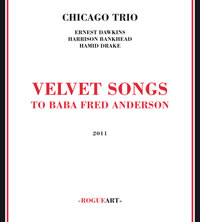 Chicago Trio – saxophonist Ernest Dawkins, bassist Harrison Bankhead, and drummer Hamid Drake – plays quintessential Windy City free jazz. The swing, bop, blues, and R&B influences sunk deep at the music’s base are constantly bursting out, shaping, coloring and ultimately anchoring the music in a shared culture. Dedicated to tenor saxophonist and Velvet Lounge proprietor Fred Anderson, who mentored and supported them (and so many other Chicago improvisers), the music on their self-titled double CD is as rooted, progressive and joyful as that of the late great tenor saxophonist.
Chicago Trio – saxophonist Ernest Dawkins, bassist Harrison Bankhead, and drummer Hamid Drake – plays quintessential Windy City free jazz. The swing, bop, blues, and R&B influences sunk deep at the music’s base are constantly bursting out, shaping, coloring and ultimately anchoring the music in a shared culture. Dedicated to tenor saxophonist and Velvet Lounge proprietor Fred Anderson, who mentored and supported them (and so many other Chicago improvisers), the music on their self-titled double CD is as rooted, progressive and joyful as that of the late great tenor saxophonist.
On improvisations like “One for Fred” and “Sweet 22nd St. (Velvet Lounge),” Dawkins plays with the long lines and irregular phrases of bop and with the sonority of the blues, while Bankhead and Drake interweave permutations of walking bass lines and the frequent accenting common in bop. There’s nothing strict about their homage, the fluidity of form and wide ranging narrative of each piece ensuring the music is questing and new; but the past clearly informs what they play. Nor are the points of reference on the disc exclusively American. “Peace and Blessings (to Fred)’ and “You Just Crossed My Mind,” with their use of frame drums, mbira, and lovely folk-like melodies, call to mind other musics from around the world.
Mainly, the music is “just” very high-level improvisation played by three masters of the idiom operating at their peak. They build a secure collective identity, a sense of making something together, on “Astral Projection.” The music passes among them, from hand to hand, instrument to instrument. One moment Bankhead’s melodic line reflects something Dawkins played. Then Dawkins in turn sidetracks a line because he heard something he liked from Bankhead. A cymbal splash from Drake announces its pleasure with a Dawkins’ turn of phrase. At other times a shared feeling of high spirits permeates the music to such an extent that they can make music that sounds unified even when they’re acting independently. No one states the beat, but they’re swinging as if Art Blakey were driving them. “Waltz of Passion” is another great independent/together performance. Drake sometimes keeps time with his cymbal, but that is the lone sentinel of the time. Dawkins and Bankhead are on and off the beat, slipping around it, gliding from note to note.
“Galaxies Beyond” shows how well they can move from one area to another with a sense of inevitability. The piece opens in a roiling mass, with Bankhead bowing arco wails, Dawkins gibbering and ululating on alto sax, and Drake rumbling and pulsating like distant thunder. Bankhead gradually establishes a fast tempo with some nasty vamping lines that propel the trio into music as urgent as an intense argument, or a warning of danger, or an uncontainable excess of sheer life and feeling. Over the course of two discs, perhaps only “Down ‘n’ the Delta” fails to live up to the high standards set by the other 11 tracks.
This is a splendid performance, intensified by the connection that Dawkins, Bankhead, and Drake clearly feel to Anderson and by their sense of the occasion – a chance to pay homage to a man who meant so much to them personally and artistically.
–Ed Hazell
